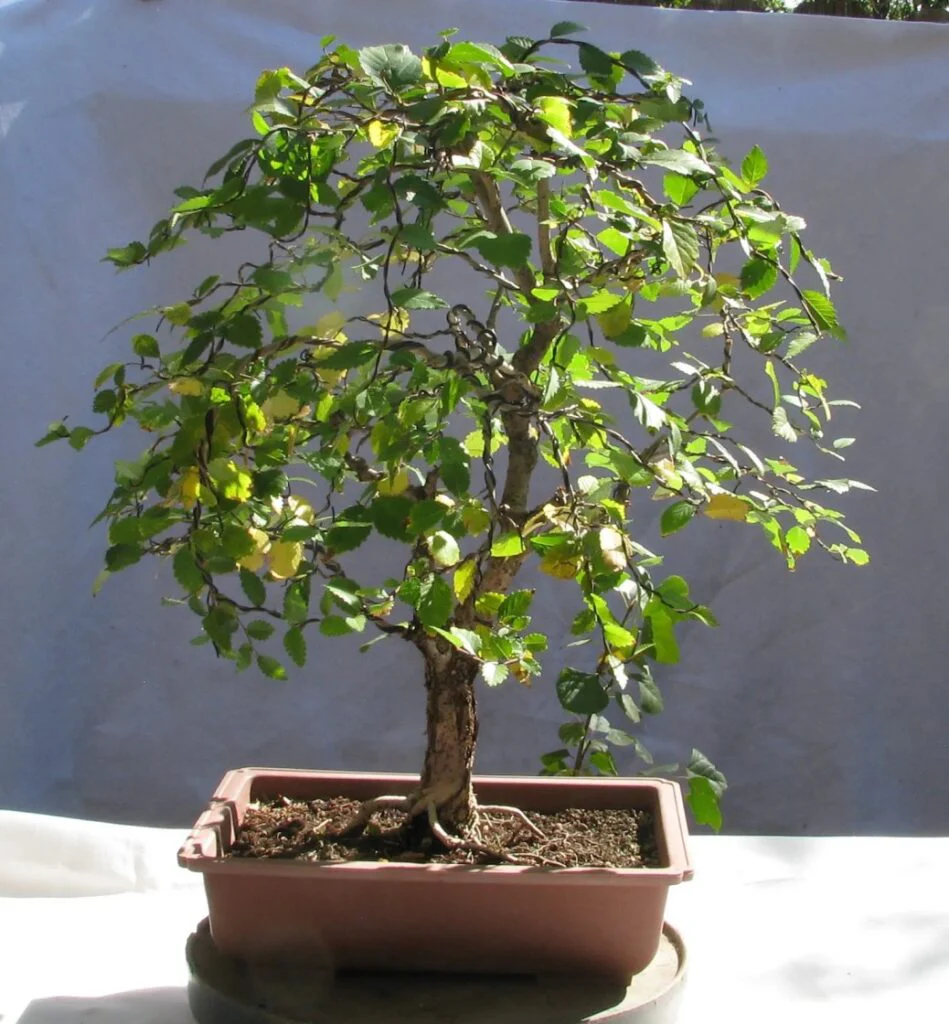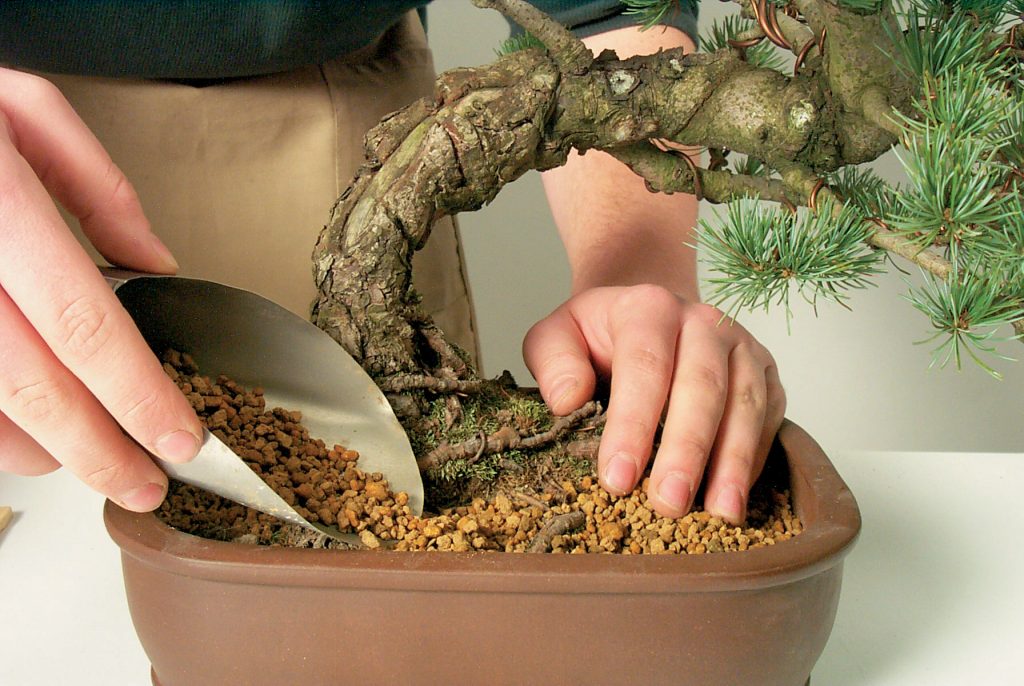Chinese elm bonsai are one of the easiest ways to get started with bonsai. They’re tough, forgiving, and develop that classic “tiny tree” look quite quickly. With the right light, watering and pruning, your Chinese elm bonsai can stay healthy and attractive for many years.
If you’d like a broader overview of watering, feeding and general bonsai care, the Bonsai Tree Care guide is a great companion to this article.
Contents
- 0.1 What Makes Chinese Elm Bonsai So Popular?
- 0.2 Best Light and Location for Chinese Elm Bonsai
- 0.3 Watering and Humidity for Chinese Elm Bonsai
- 0.4 Soil, Repotting and Pots for Chinese Elm Bonsai
- 0.5 Pruning, Shaping and Wiring Chinese Elm Bonsai
- 0.6 Seasonal Care: Indoors vs Outdoors
- 0.7 Common Problems with Chinese Elm Bonsai (and Easy Fixes)
- 0.8 FAQs About Chinese Elm Bonsai
- 0.9 Final Thoughts on Chinese Elm Bonsai
- 0.10 Related Articles
- 1 Find the Perfect Watering Schedule for Indoor Plants
What Makes Chinese Elm Bonsai So Popular?
Chinese elm bonsai are popular because they combine character with toughness. They have small leaves, naturally fine branching and bark that develops texture as the tree ages. That means even a young Chinese elm bonsai can look surprisingly mature.
They also cope better than many bonsai species with indoor conditions. While they still appreciate fresh air and bright light, a Chinese elm bonsai will usually adapt to a bright windowsill or sheltered patio without complaining too much, which is perfect if you’re just getting started.
Over time, regular pruning and light wiring will create the classic layered canopy and defined trunk line that make Chinese elm bonsai so satisfying to grow.

Best Light and Location for Chinese Elm Bonsai
Getting the location right is one of the most important parts of caring for a Chinese elm bonsai. They love bright, indirect light and can also handle a few hours of gentle direct sun, especially morning sun.
Good spots include:
An east- or south-facing windowsill with filtered light
A bright conservatory or sunroom
Outdoors on a sheltered balcony or patio in mild weather
Try to avoid:
Deep shade – your Chinese elm bonsai will grow weak, leggy shoots
Very hot, dry windows right against glass in midsummer
Draughty spots right by doors or radiators
Many people keep Chinese elm bonsai outdoors for part of the year and bring them into a cool, bright room over winter. That slight change of seasons often keeps them healthier than staying in one static environment.
Watering and Humidity for Chinese Elm Bonsai
Most problems with Chinese elm bonsai come from watering, not pests or diseases. The goal is to keep the soil evenly moist, never bone-dry and never soggy.
Simple watering tips:
Check the top of the soil daily. When the top centimetre feels slightly dry, it’s time to water.
Water thoroughly until liquid runs out of the drainage holes, then let excess drain away.
Never leave your Chinese elm bonsai sitting in a saucer of water for long periods.
In summer or in very warm rooms, you might water once a day. In winter, it may be every few days instead.
Chinese elm bonsai appreciate moderate humidity. A simple humidity tray with pebbles and water under the pot (without the roots sitting in water) helps buffer dry indoor air, especially in heated rooms.
Soil, Repotting and Pots for Chinese Elm Bonsai
Chinese elm bonsai prefer a free-draining soil mix that holds some moisture but doesn’t stay wet. Many growers use a bonsai-specific mix that includes components like akadama, pumice and bark, but for a beginner, any good quality bonsai soil that drains freely is fine.
Repot every 2–3 years in early spring before vigorous growth starts. Younger, fast-growing Chinese elm bonsai may need more frequent repotting, while older trees can go slightly longer. Signs it’s time to repot include:
Water running straight off the surface without soaking in
Roots circling heavily around the pot
Reduced growth or poor vigour despite good care
A shallow ceramic bonsai pot with drainage holes and mesh over the base is ideal for Chinese elm bonsai, giving roots room to spread while keeping the classic bonsai look.
When repotting, comb out the outer roots gently, remove some of the old soil, trim any very long or thick roots, and replant into fresh mix at the same depth.

Pruning, Shaping and Wiring Chinese Elm Bonsai
Pruning is where a Chinese elm bonsai really starts to look like a miniature tree rather than a small shrub.
Maintenance pruning:
Throughout the growing season, let new shoots extend to 4–6 leaves.
Cut them back to 2–3 leaves to keep the silhouette tight and encourage ramification (lots of fine twigs).
Always use sharp, clean tools so cuts are neat.
A set of sharp bonsai pruning shears makes it much easier to keep a Chinese elm bonsai neat without crushing tender shoots.
Structural pruning and wiring:
In late winter or early spring, step back and check the overall shape of your Chinese elm bonsai.
Remove any crossing, inward-growing, or very thick branches that spoil the trunk line.
Use bonsai wire to gently bend young branches into more attractive positions, but avoid wiring old, stiff wood that may snap.
Work gradually. It’s better to prune and shape a little each year than to remove huge sections of growth in one go.
Seasonal Care: Indoors vs Outdoors
Chinese elm bonsai can behave differently depending on where you live and how you grow them.
In milder climates, many people keep Chinese elm bonsai outdoors for most of the year, only moving them to a sheltered, frost-free spot in the coldest weather.
In cooler climates or flats, they’re often treated as indoor bonsai, kept in bright rooms away from direct heat sources and draughts.
Some Chinese elm bonsai may drop part or all of their leaves in winter – this can be normal, especially if light levels drop. As long as the trunk and branches stay firm and green under the bark, new leaves should appear in spring.
According to guidance from specialist bonsai organisations, giving Chinese elm bonsai a slightly cooler, brighter winter rest often results in stronger, healthier growth the following season.
Common Problems with Chinese Elm Bonsai (and Easy Fixes)
Even with good care, you might see a few issues:
Yellowing leaves: Often caused by overwatering, poor drainage, or sudden changes in light. Check the soil and watering routine first.
Spider mites or aphids: These tiny pests sometimes appear in dry indoor air. A gentle blast of water, followed by a mild, plant-safe insecticidal soap, usually clears them.
Weak, leggy growth: Usually a sign your Chinese elm bonsai isn’t getting enough light. Move it to a brighter spot.
Sudden leaf drop: Can happen after moving the tree or big temperature changes. Keep conditions steady and avoid overwatering while it adjusts.
Most problems ease once watering, light and airflow are back in balance.
FAQs About Chinese Elm Bonsai
1. Is Chinese elm bonsai good for beginners?
Yes. Chinese elm bonsai are one of the most beginner-friendly species because they tolerate a range of conditions and bounce back from minor mistakes better than many other bonsai.
2. Should Chinese elm bonsai be kept indoors or outdoors?
They can handle both. In many areas, Chinese elm bonsai do best outdoors in mild seasons and in a bright, cool indoor spot over winter. The key is avoiding extreme cold, intense heat, or deep shade.
3. How often should I water my Chinese elm bonsai?
There’s no fixed schedule. Check the soil daily and water when the top feels slightly dry. In summer this might be every day; in winter it might be every few days.
4. How fast do Chinese elm bonsai grow?
They grow fairly quickly compared to some bonsai species, which makes them rewarding to shape. With good care, you’ll see new growth and thickening branches each season.
5. When should I repot a Chinese elm bonsai?
Repot every 2–3 years in early spring, or when water no longer soaks in properly and roots are tightly circling the pot. Younger trees may need more frequent repotting than older, established ones.
Final Thoughts on Chinese Elm Bonsai
Chinese elm bonsai are a brilliant mix of toughness and character. Once you understand their basic needs – bright light, free-draining soil, careful watering and regular pruning – they’re surprisingly forgiving, even if you’re new to bonsai.
Work slowly, observe how your Chinese elm bonsai responds through the seasons, and make small adjustments rather than drastic changes. Over time, you’ll build a tree with a strong trunk line, fine branching and a shape that genuinely feels like a miniature elm growing on a hillside. It’s a long-term project, but watching your Chinese elm bonsai develop year after year is one of the most satisfying parts of the hobby.
Related Articles
KEEP YOUR BONSAI PROPERLY HYDRATED
Find the Perfect Watering Schedule for Indoor Plants
Watering is one of the easiest ways to stress a bonsai without realising it. If you’d like clearer guidance on how often to water, signs of overwatering, and how to adjust for seasons, our Perfect Watering Schedule for Indoor Plants guide breaks it down in simple steps so your bonsai and other houseplants stay healthy.

